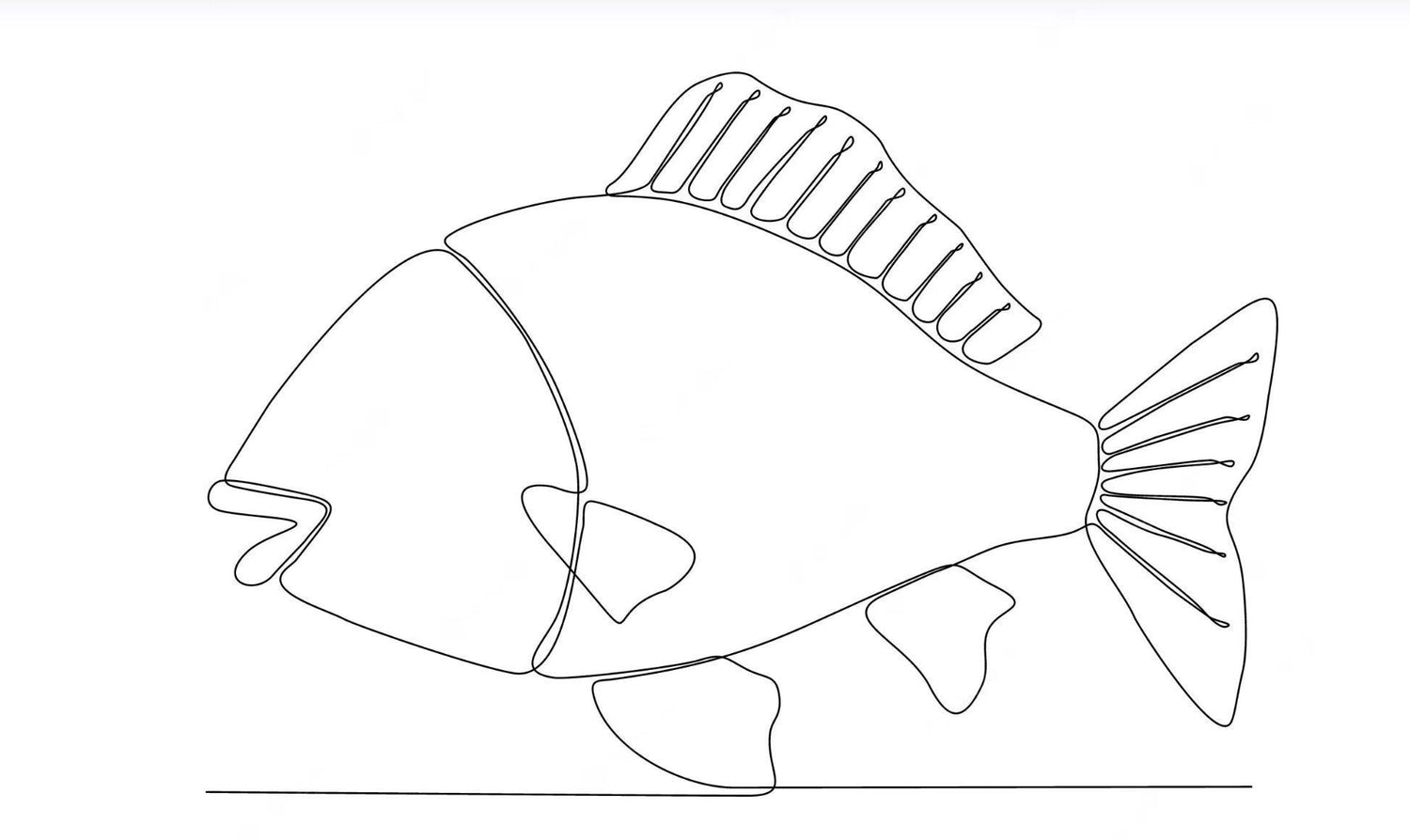

Why Fish Sketching is a Great Skill to Learn
Fish sketching is an excellent way to improve your drawing skills and expand your artistic repertoire. Fish are a popular subject in art, from classic still life paintings to modern graphic design. Sketching fish is also a great way to improve your observation skills, as fish move in a unique and fascinating way. By studying fish anatomy and observing fish in their natural habitat, you can improve your understanding of the world around you and develop your artistic abilities.

Basic Materials Needed for Fish Sketching
To get started with fish sketching, you'll need a few basic materials. First and foremost, you'll need something to draw with. Pencils are a popular choice for sketching, as they allow for precise lines and shading. You may also want to experiment with different types of pens or markers for a more bold and graphic look.
You'll also need something to draw on, such as a sketchbook or loose sheets of paper. Choose a surface that is suitable for your chosen medium, whether it be pencil, pen, or marker. A heavier weight paper will hold up better to erasing and shading.

Finally, you may want to invest in some good quality erasers and sharpeners. A good eraser will allow you to correct mistakes and refine your sketches, while a sharpener will keep your pencils in top condition.
Understanding Fish Anatomy and Proportions

To create accurate and lifelike fish sketches, it's important to understand the basic anatomy and proportions of fish. Fish come in a wide variety of shapes and sizes, but most share some basic characteristics.
Fish have a streamlined body with a pointed head and tapered tail. They also have fins on their sides, top, and bottom, which help them to swim and maneuver. The size and shape of these fins can vary, depending on the type of fish.
When sketching fish, it's important to pay attention to the proportions of the different parts of their body. The head should be in proportion to the body, and the fins should be in proportion to the head. By observing fish closely and practicing your sketching skills, you can improve your ability to create accurate and lifelike fish sketches.

Tips on How to Draw Fish from Observation
Drawing fish from observation can be a challenging but rewarding experience. To get started, find a quiet spot near a body of water where you can observe fish in their natural habitat. Pay attention to the way they move, the shape of their body, and the colors and patterns on their skin.
When you're ready to start sketching, begin by drawing the basic shape of the fish's body. Use light, loose lines to sketch in the outline of the fish, paying attention to the proportions and angles of its body. Once you have the basic shape in place, start adding the details, such as the fins, eyes, and mouth.
As you work, keep referring back to the fish you're observing. Check your proportions and angles regularly to ensure that your sketch is accurate. Don't worry if your sketch isn't perfect - the goal is to improve your skills over time.
How to Sketch Fish from Photos or Reference Images

If you don't have access to live fish to observe, you can still practice your fish sketching skills using photos or reference images. There are many resources available online for finding high-quality fish photos, such as stock photo websites or online aquariums.
When using a photo or reference image, start by studying the basic shape and proportions of the fish. Use light, loose lines to sketch in the outline of the fish, paying attention to the angles and curves of its body. Once you have the basic shape in place, start adding the details, such as the fins, eyes, and mouth.
As you work, keep referring back to the photo or reference image to ensure that your sketch is accurate. Pay attention to the colors and patterns on the fish's skin, and try to capture these details in your sketch.

Adding Depth and Texture to Your Fish Sketches
To create more realistic and lifelike fish sketches, it's important to add depth and texture to your drawings. One way to do this is by using shading techniques to create the illusion of depth and dimension.
Start by identifying the light source in your drawing. This will help you to determine where the shadows and highlights should fall on the fish's body. Use light, loose lines to sketch in the shadows and highlights, gradually building up the shading until you achieve the desired effect.
You can also add texture to your fish sketches by varying the pressure and direction of your pencil strokes. Use lighter strokes to create smooth, shiny areas on the fish's body, and heavier strokes to create rough, textured areas.

Different Styles of Fish Sketching
There are many different styles of fish sketching, from realistic and lifelike to bold and graphic. Some artists prefer to work in a more traditional, realistic style, while others prefer to experiment with bold colors and abstract shapes.
Experiment with different styles to find the one that best suits your personal style and artistic vision. Don't be afraid to try new things and push the boundaries of your skills and abilities.

Inspiration and Resources for Fish Sketching
There are many resources available online for finding inspiration and improving your fish sketching skills. Some popular websites and resources include:
-
Pinterest: A great resource for finding high-quality fish photos and sketches, as well as inspiration for different styles and techniques.
-
DeviantArt: A community of artists sharing their work and offering feedback and support to one another.
-
YouTube: A wealth of tutorials and demonstrations on different fish sketching techniques and styles.

Common Mistakes to Avoid in Fish Sketching
When first starting out with fish sketching, it's common to make a few mistakes. Some common mistakes to avoid include:
-
Overworking your sketch: It's easy to get caught up in the details and spend too much time on a single sketch. Remember to step back and evaluate your progress, and don't be afraid to start over if necessary.
-
Ignoring proportions and anatomy: To create accurate and lifelike fish sketches, it's important to pay attention to the proportions and anatomy of the fish. Take time to observe fish in different positions and angles, and practice sketching these variations.
-
Using the wrong materials: Different mediums require different materials, so it's important to choose the right tools for your chosen medium. Using the wrong materials can result in a subpar sketch and limit your artistic abilities.

Conclusion and Next Steps for Mastering Fish Sketching
Fish sketching is a rewarding and challenging skill to learn, and with practice and dedication, anyone can master it. Whether you're an experienced artist or a beginner looking to expand your skills, there are many resources and techniques available for improving your fish sketching abilities.
To get started, invest in some basic materials, study fish anatomy and proportions, and practice sketching from observation and reference images. Experiment with different styles and techniques, and don't be afraid to make mistakes - it's all part of the learning process.
With time and practice, you'll be able to create lifelike and stunning fish sketches that capture the beauty and complexity of these fascinating creatures. So grab your pencils and sketchbook, and start mastering the art of fish sketching today!







Leave a comment
All comments are moderated before being published.
This site is protected by hCaptcha and the hCaptcha Privacy Policy and Terms of Service apply.